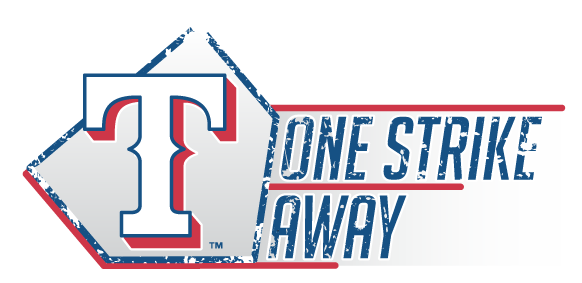Whither the Rangers in 2017? Insights on Hope and Despair Part One
/Is it Darth Vader? Or is it all in your mind? Yes.
I had three articles in the planning stages, and I decided to generally combine them into one. This one. But then I didn't. This is the one where I talk about Derek Holland, and the implications of his departure on the starting rotation.
Derek Holland wasn't very good in 2016. Actually, there wasn't a lot about Derek Holland's 2015 to offer any reason to expect better in 2016. And Derek Holland's 2014 wasn't anything to write home about, either. And come to think of it, 2013...no wait. He was good in 2013. In fact, 2013 was the best Major League season Holland ever turned in. After a solid 2011 in which Derek Holland showed not only a pretty good year for a Middle-of-the-Rotation lefty, he showed the promise of being *even better*, followed by a full season in 2012 that looked a lot more like a decent season for a back-end, innings-eating guy. Then the really good 2013 that was an improvement of 2011 all the way around.
And then began the injuries. In 2014, Dutch pitched 37 innings for the Rangers. His results were *fabulous*, although his xFIP (eXpected Fielding-Independent Pitching, a statistic that produces an ERA-like number based on normalizing a pitcher's fly ball and home run results, as well as applying a leavening factor to strikeouts and walks. This will, with effective pitchers, usually show an ERA-like number better than their actual ERA. Less-effective pitchers will frequently sport a higher xFIP than ERA. These are generalizations, not absolutes) indicated a performance similar to 2013 and 2011 rather than the giant improvement his 1.46 ERA would suggest.
In 2015, Holland was injured again...this time his return to the Bigs was disastrous. Over 58.2 innings, he produced numbers very similar to 2009; his first appearance with Texas. The good news was that his xFIP *this* time indicated that he should return to at least being that serviceable, back-of-the-rotation pitcher that he had looked like at his *worst*. Because of that, it was widely assumed that the first of his two contract options would be picked up by the Rangers at the end of 2016. The prices for back-end pitchers had started to skyrocket, and Holland's $11 million price tag was a bargain.
And THEN 2016 happened. In some regards, Dutch *technically* improved his performance in some areas. Very, very slightly. But the important number was: his strikeout percentage was WAY down. Derek wasn't throwing nearly as hard as he used to. Despite similar Batting Average on Balls in Play to his career numbers; despite a similar walk rate; a similar Ground Balls Induced percentage; and a similar Home Runs allowed percentage, his ERA and FIP (Fielding-Independent Pitching, like xFIP except it doesn't normalize home runs allowed) were still around 5.00. Worse, his xFIP was 5.14, almost a full point higher than 2015.
The stinker is, there is very little evidence of a "smoking gun" statistic. His numbers were all in line with recent years (keeping in mind those were mostly bad years). Where you see it all fall together is in comparing 2016 with 2011 - 2013. Everything was just a little bit worse, and almost everything WAS worse. Just a little bit, mostly.
When you combine pitching just a little bit worse with a fastball that just wasn't quite good enough to get people out anymore, you wind up with a guy who was actually LUCKY he didn't do worse in 2016.
And *that* is what I was referencing when I kept mentioning during the year that Holland wasn't actually pitching very well, even though he got good results in several games. However, even then I still expected Texas to pick up his contract option, considering how expensive Middle Rotation and Back End pitchers have become. It genuinely surprised me that they didn't.
There are possible reasons, of course. Texas may know, or at least suspect, that Holland has serious or long-term damage in his shoulder or some other important body part. It could simply be that the right people see the negative performance trend and believe (probably rightly) that pitching at that presumed level could be filled by cheap, internal options.
In conjunction with that is the possibility that Texas really is committed to improving the rotation. As much as you can blame the Toronto series that ended 2016 on very, very, bad officiating; you also can not escape the fact that the starting rotation wasn't as good as it was expected to be. In particular, Cole Hamels wasn't very good in the second half of 2016.
The bottom line is: while everyone keeps saying "you don't worry about Cole Hamels", I think we all need to consider how often we heard that line repeated in a reassuring tone by many, many bloggers and analysts last year. Hamels' 2016 was his worst year since 2006, his first season. The big culprit was a huge increase in walks; all year batters sat back and made him make his pitch, and he didn't with the same consistency as previous years. Considering Martin Perez *also* threw up career worsts in strikeouts and walks; this isn't a questionable rotation after Cole, Yu and maybe Martin...it's a questionable rotation after Yu. And Yu has not been extended past this next year. And may not be, considering he can expect a minimum contract AAV north of $20 million and will almost certainly at least be talking about $25 million for five or more years.
THAT is why people are making "absurd" calls to trade Yu now. Looking *only* at the rotation, it's not an absurd notion.
But the Rangers, like every other baseball team, is comprised of not only pitching but also fielding and hitting. And the other parts look pretty good.
